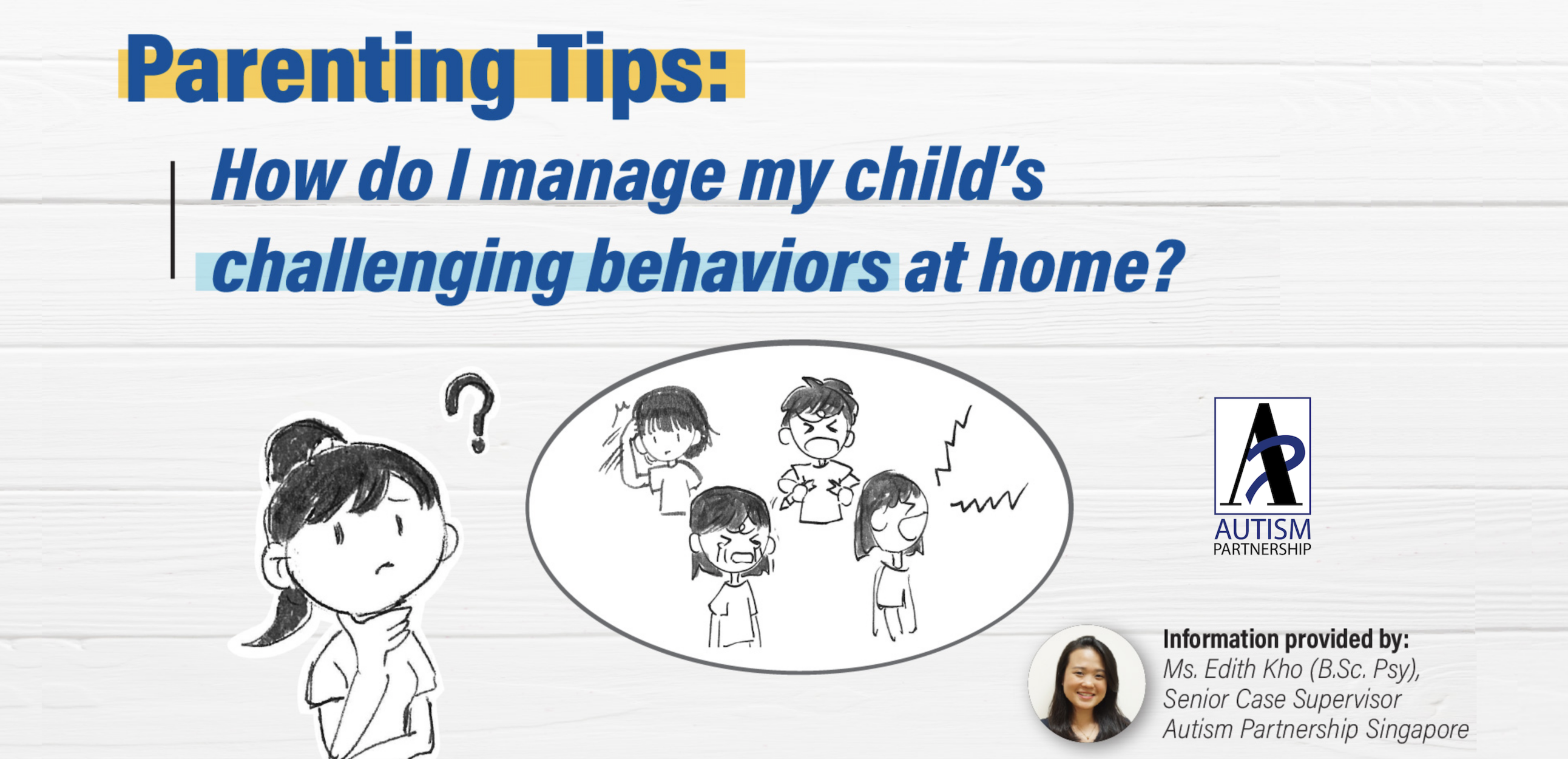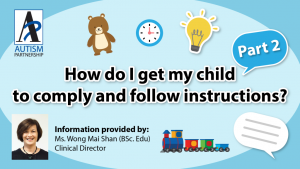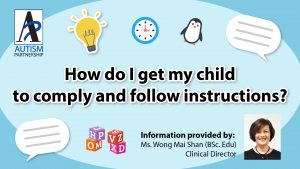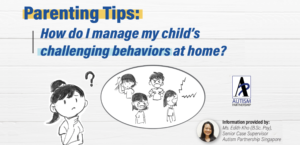Autism spectrum disorders (ASD) are neuro-developmental impairments characterised by difficulties with communication, socialisation, and rigid and repetitive behaviours (American Psychiatric Association, 2013).
Although not part of the diagnostic criteria, it is common that children with ASD often display challenging behaviours. These are inappropriate behaviours that children face that often interfere with their daily living, ability to learn and impact their quality of life.
These behaviours can be wide-ranging. It includes challenges as varied as non-compliance to doing everyday tasks, refusing to eat a particular food, behaving inappropriately in public, or intolerance to changes in their routines. It can be challenging as a parent or caregiver to manage your child’s behaviours, which often causes stress.
In this article, our Senior Case Supervisor, Edith Kho, will be sharing why behaviours occur and a 3-step guide on how to manage and address your child’s challenging behaviours.
The first step to managing behaviours is to understand why they occur.
Introducing the A-B-C to Understanding Why Behaviours Occur:
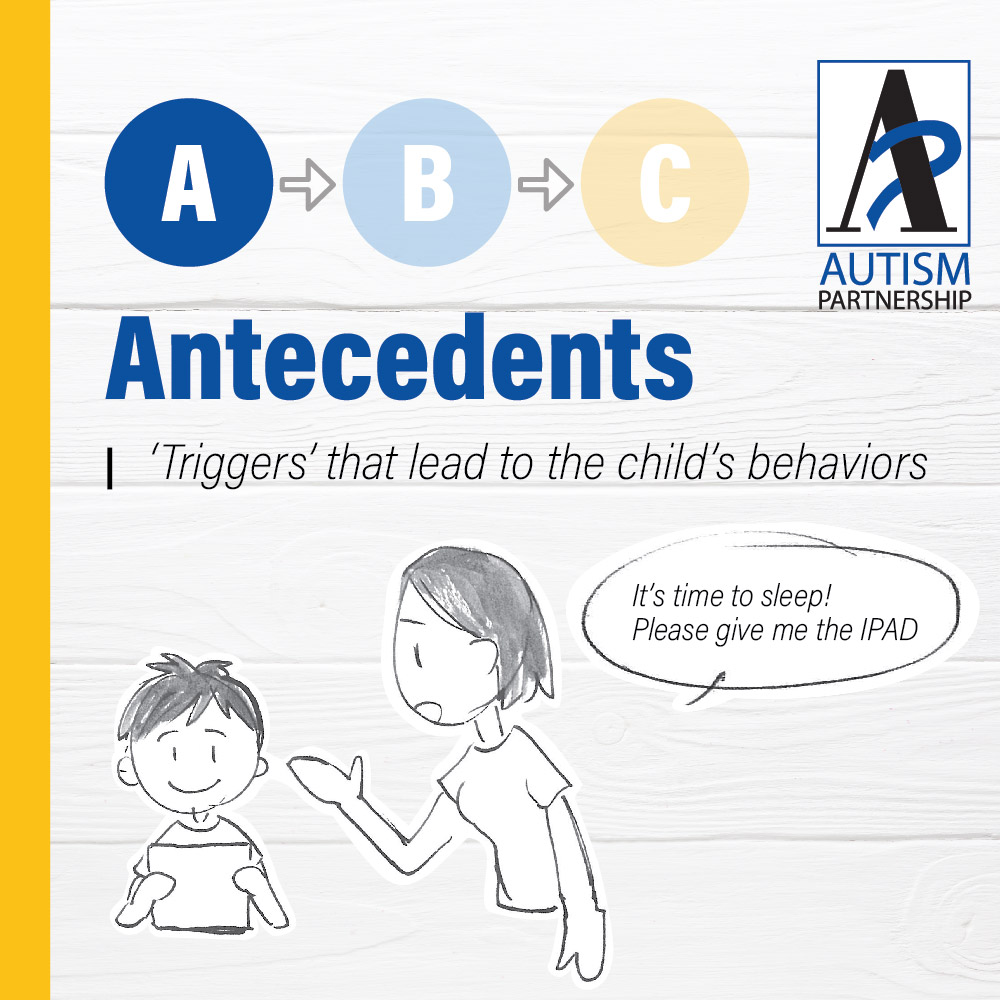
A - Antecedents:
These are what we call the ‘triggers’ that lead to your child’s behaviours.
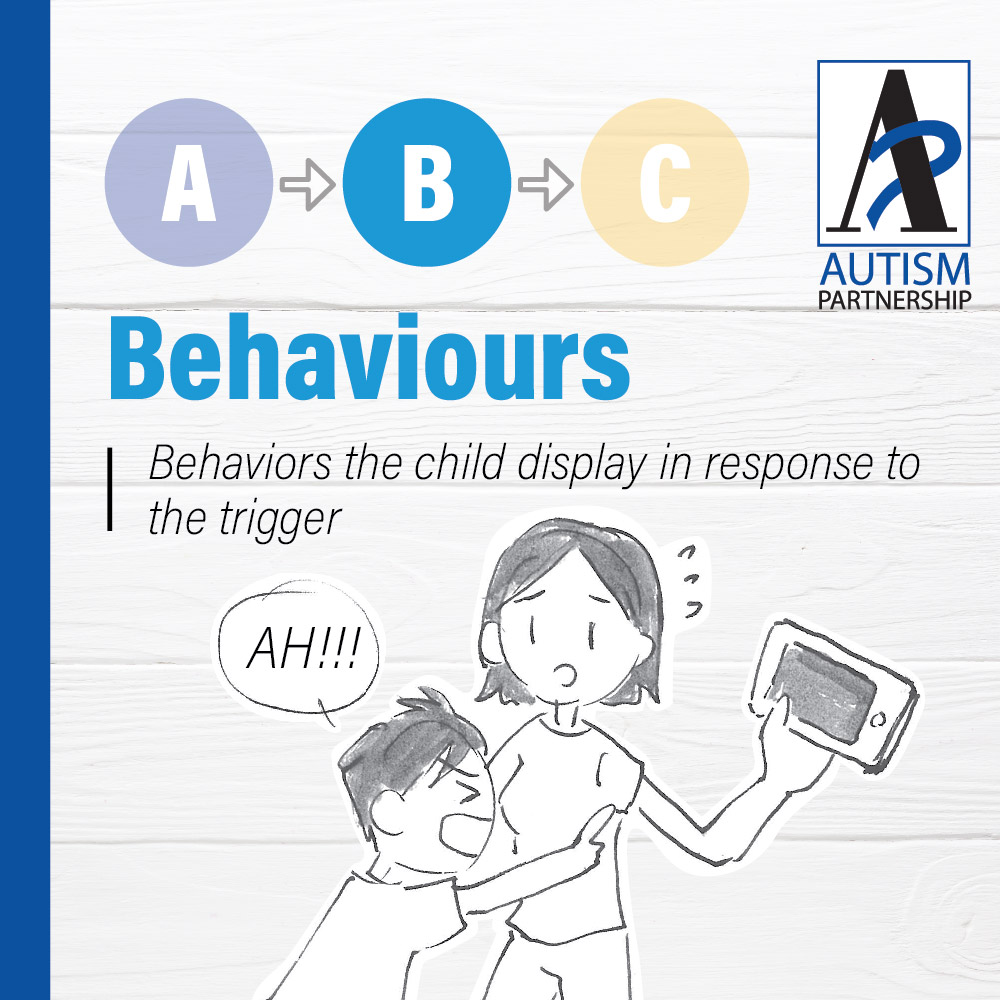
B - Behaviours:
These are the behaviours your child display in response to the trigger (E.g. Tantrums, Aggression, Non-Compliance)
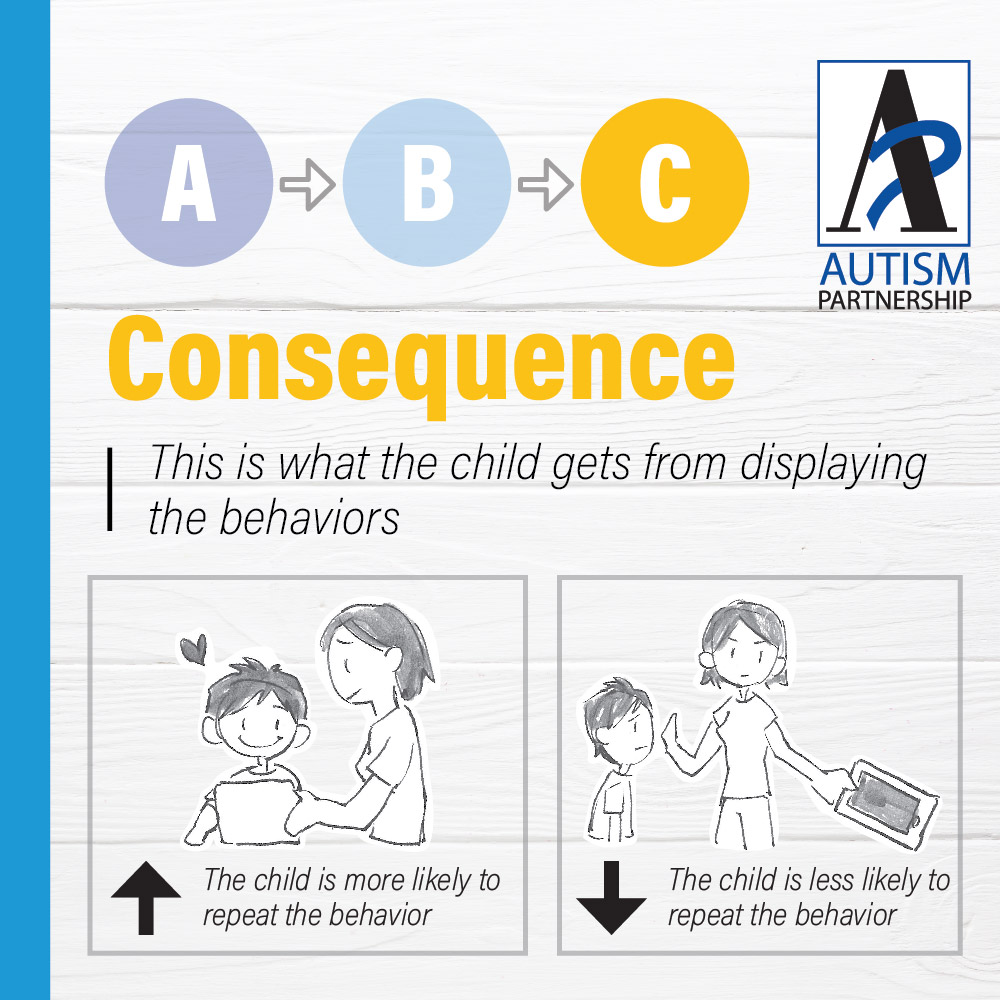
C - Consequence:
The consequence is what your child gets from displaying the behaviours. This will also determine whether your child is likely to repeat the same behaviour or not.
Now that we understand why behaviours occur, the next step is to learn how to manage and address these behaviours.
Step-by-Step Guide
3-Step Guide to Managing Challenging Behaviors for Autism:
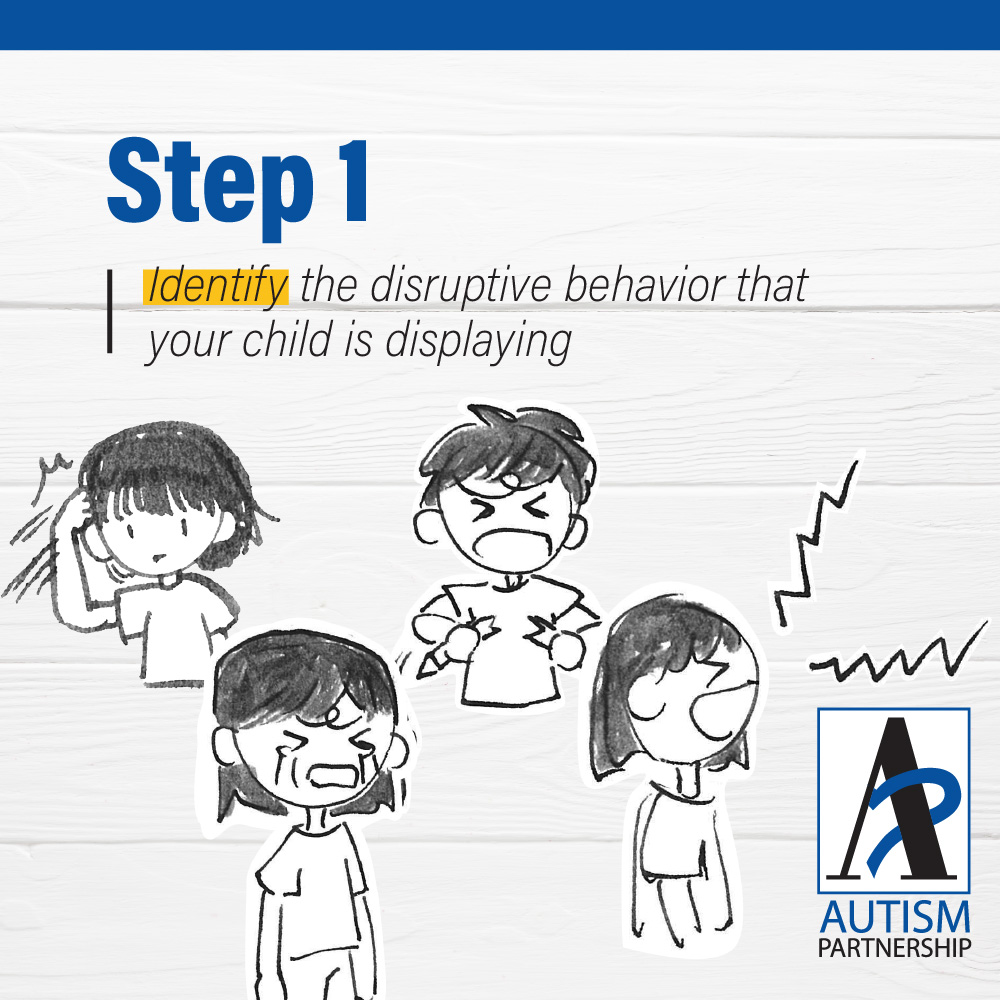
Step 1: Identify the disruptive behaviour that your child is displaying
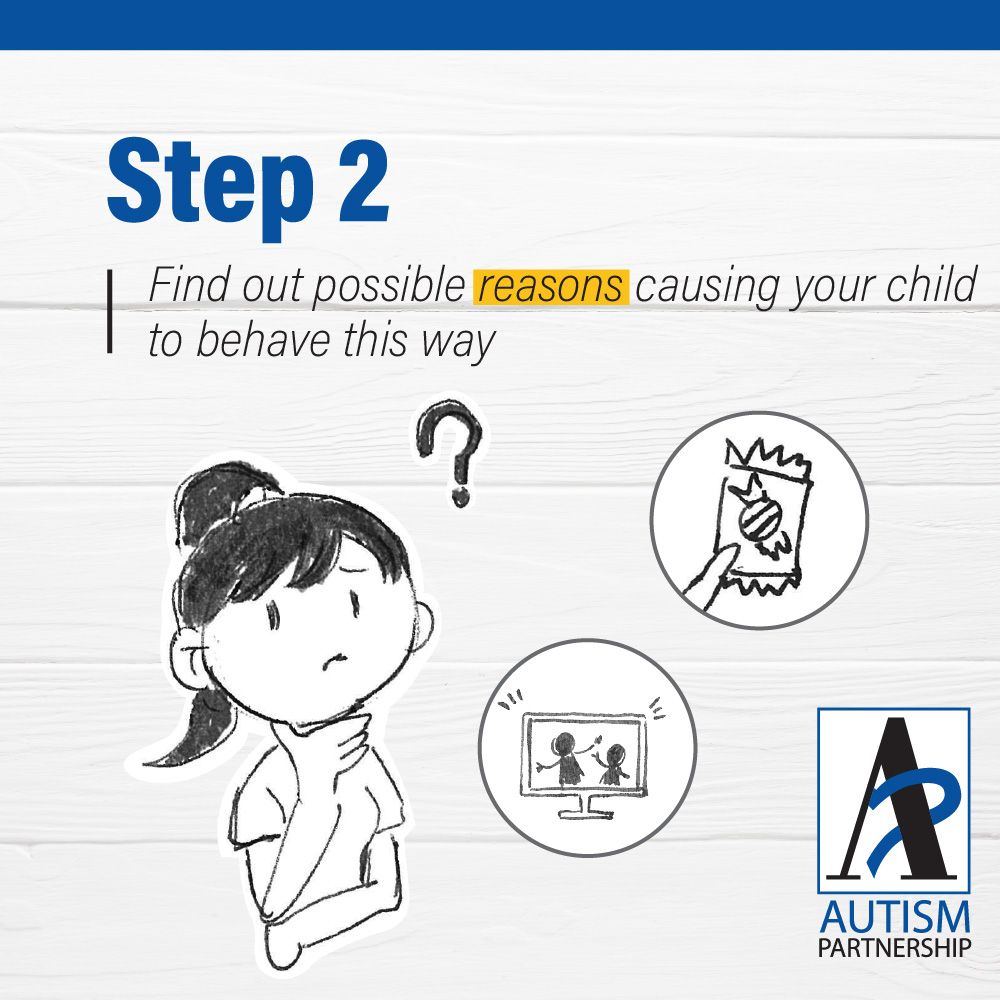
Step 2: Find out possible reasons causing your child to behave this way
| BIOLOGICAL |
• Tired • Hungry • Unwell |
|---|---|
| LEARNED |
• For avoidance • To gain access to something • To get someone’s attention • For boredom • Frustration when they unable to communicate or when refused from something that they want |
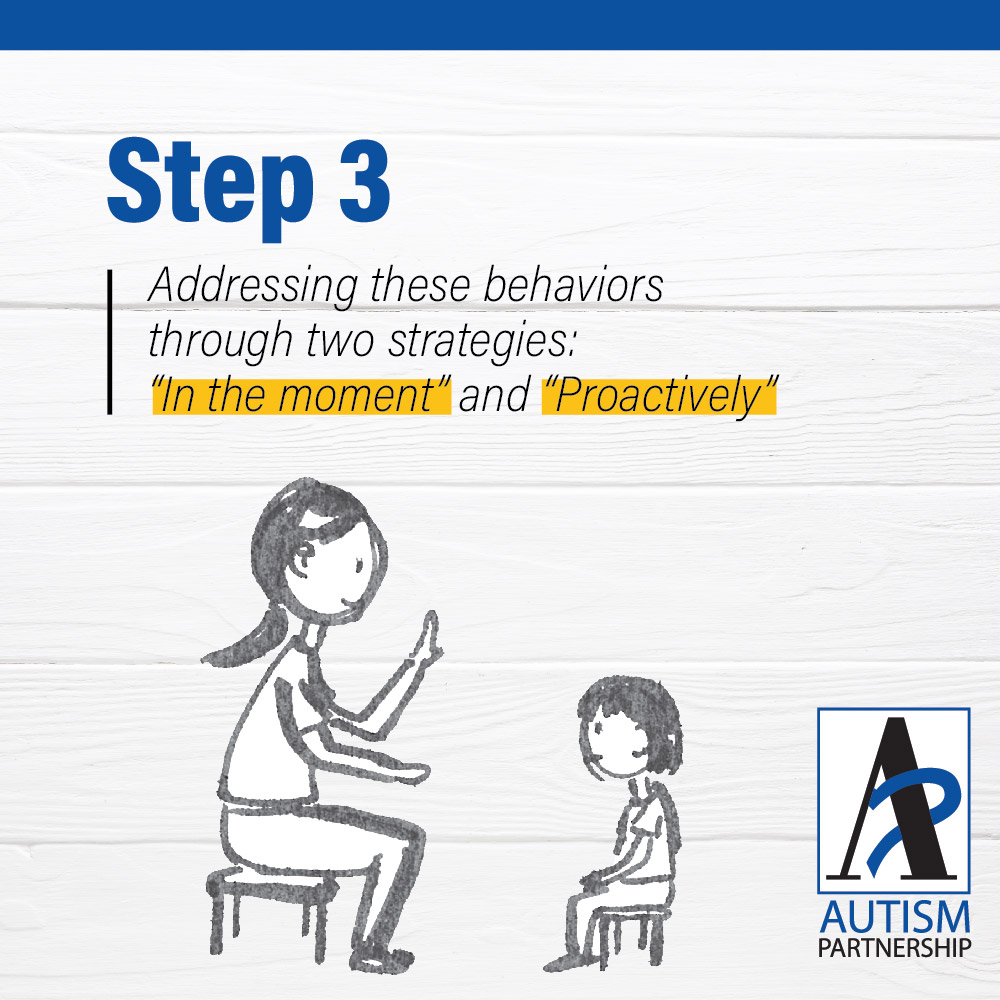
Step 3: Addressing these behaviours
Once we have identified the possible reason(s), we can look at how we can address these behaviours through these two strategies:
| "IN THE MOMENT" | What can we do in the moment when the child is displaying these behaviours? |
|---|---|
| "PROACTIVELY" | Looking at what are some meaningful replacement skills we can teach the child to help reduce the problem behaviours. |
A replacement skill is a skill that is more appropriate to replace disruptive behaviour. For example, instead of running away by themselves, you can teach your child to point and say, “I want to go there!” or instead of spitting the food, he or she can learn to say “I don’t want!”
Utilising the 3-step guide above, you can start with common behaviours that occur daily. Addressing challenging and disruptive behaviours takes time and practice, but your child will be more ready to learn and acquire new skills once these behaviours are addressed.

